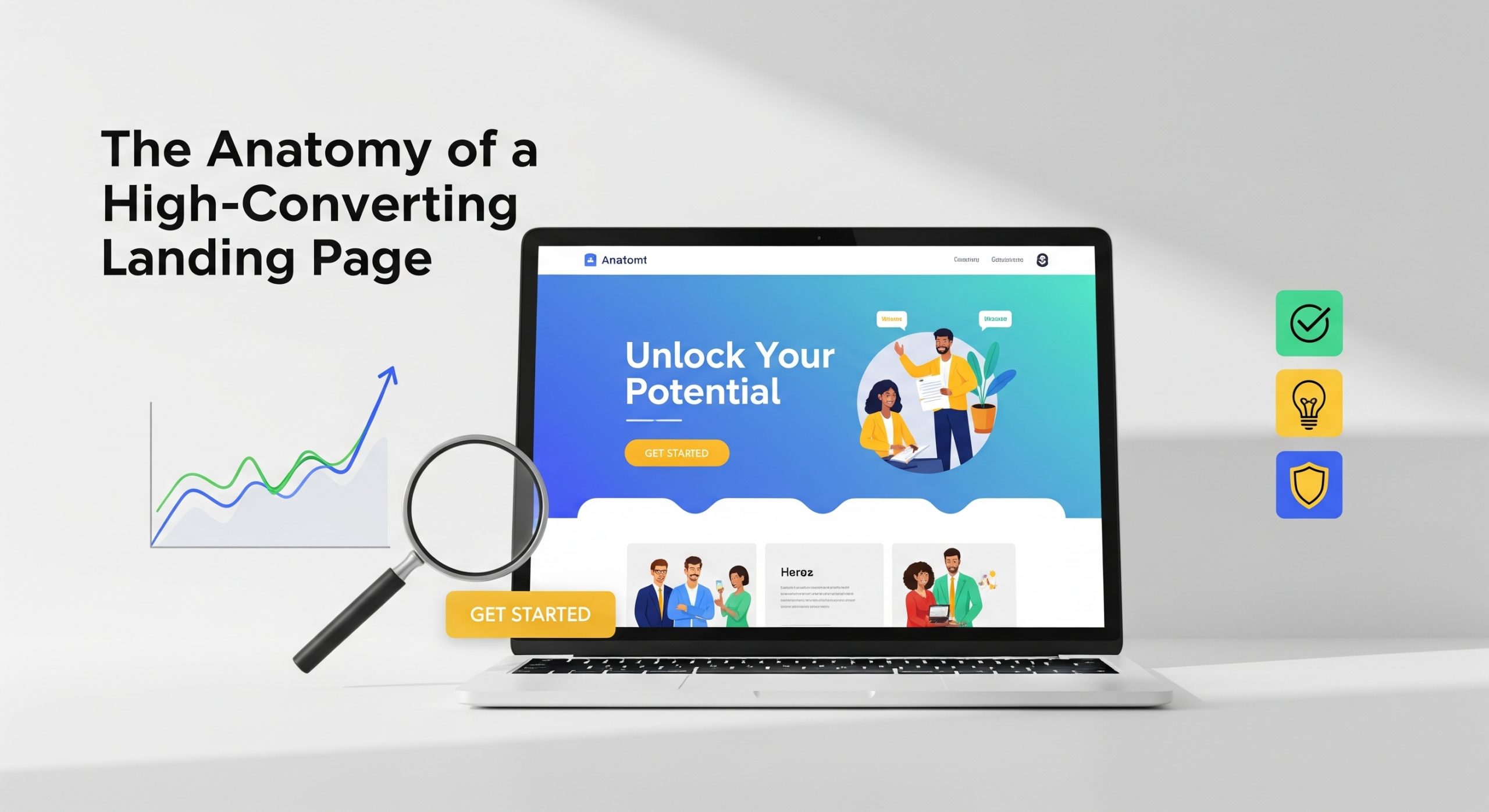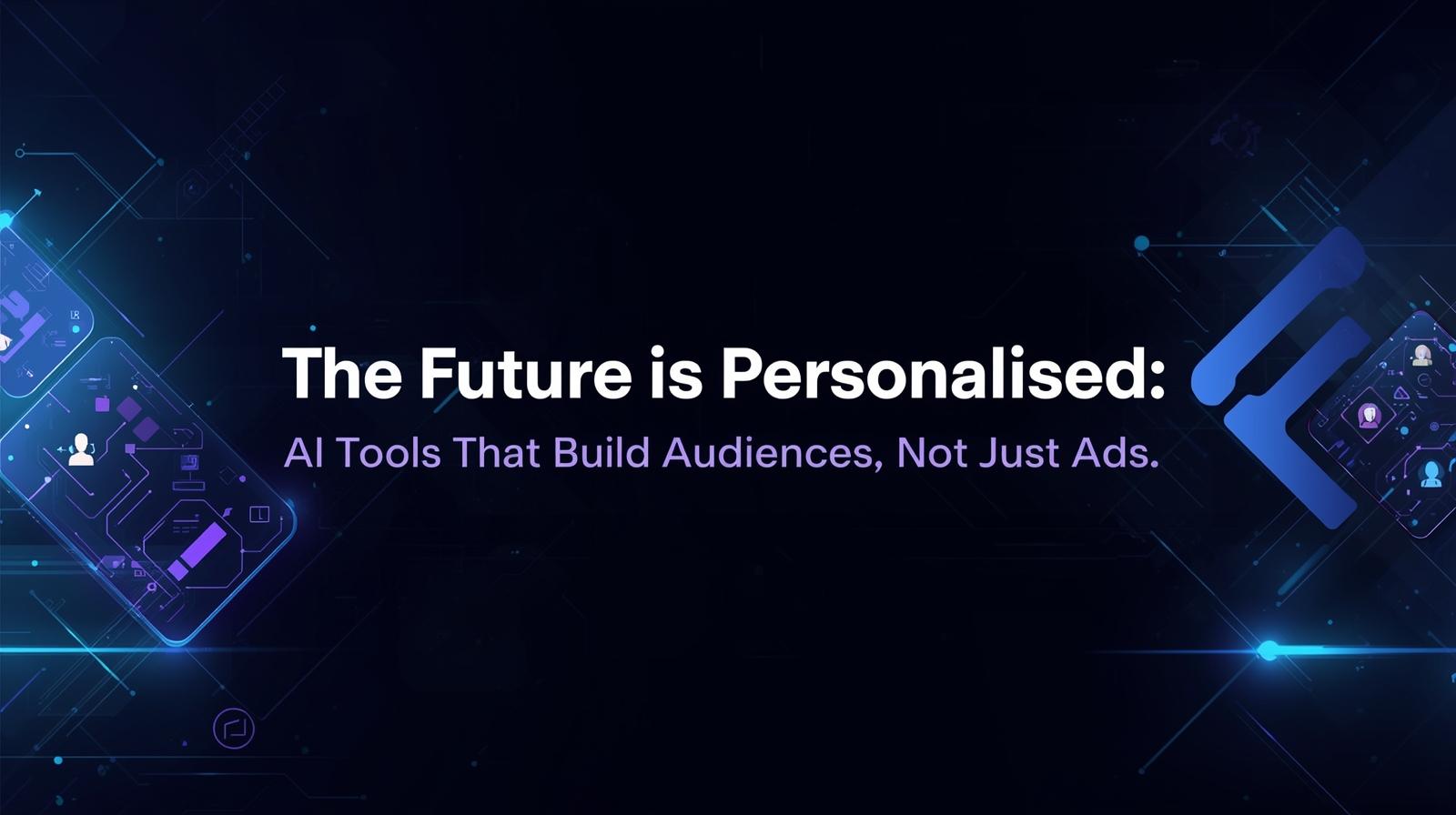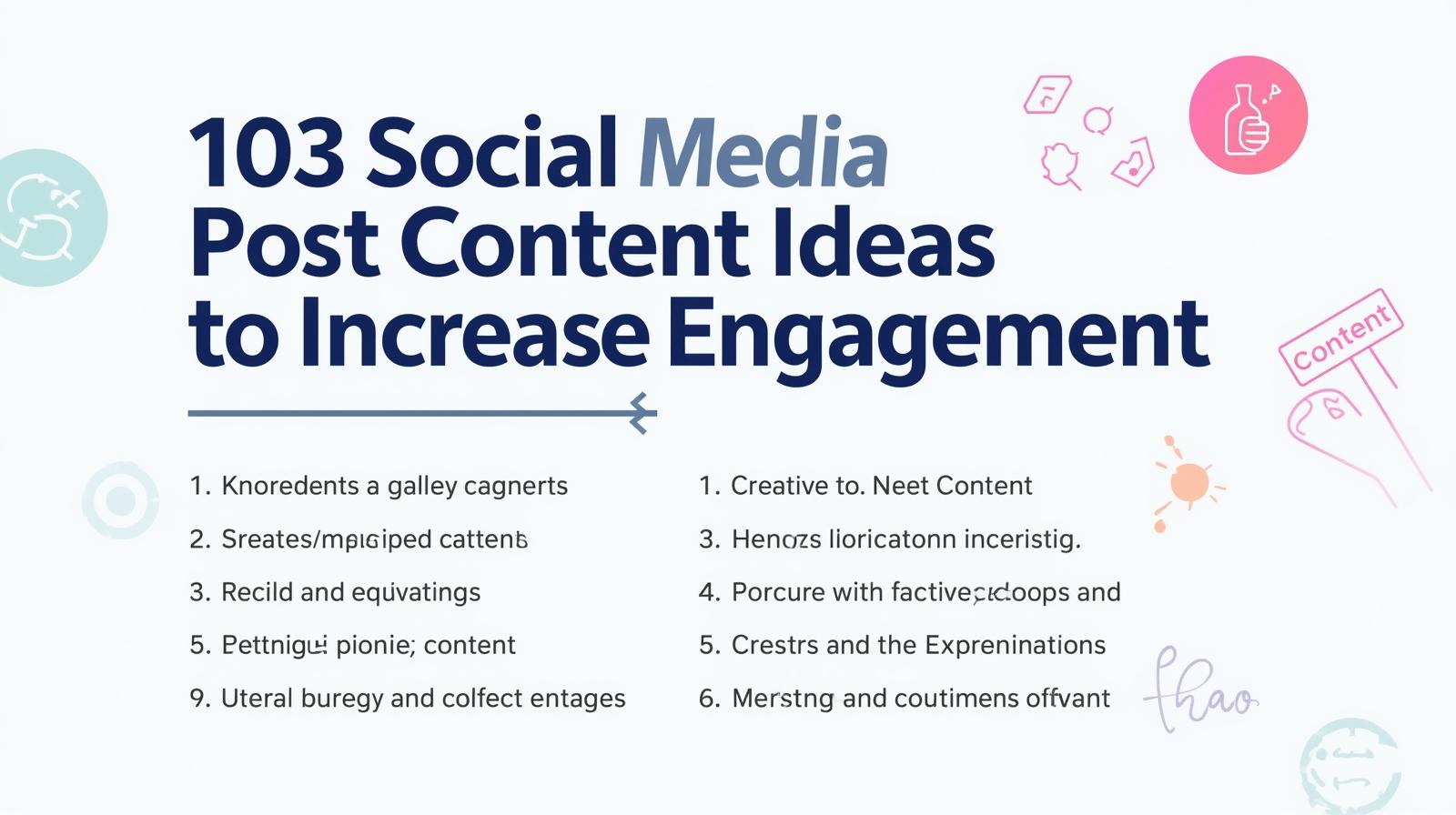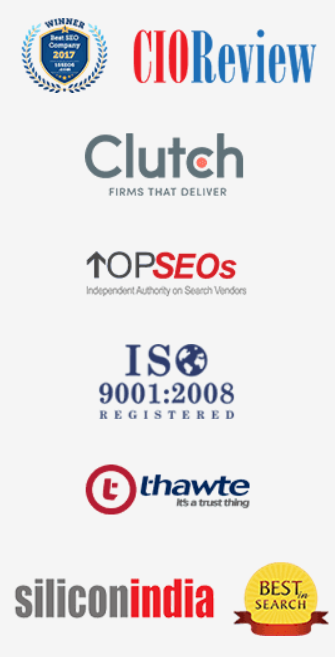A landing page is where you redirect your customers from a marketing campaign. A landing page is a distinct standalone webpage that includes critical elements like CTA, clear marketing copy, primary form, clear messages, secondary CTAs and compelling headlines.
For many performance marketing companies in India, landing pages are a go-to growth marketing strategy to increase sales and generate potential leads. One of the crucial elements of creating a high-converting landing page is the ‘design’ itself. Among several components, microcopies play a crucial role in the landing pages that turn visitors into customers.
Let us explore the intricacies and structural layout of a high-converting landing page design in this article.
Which Elements are Vital in Making a High-Converting Landing Page?
The typical anatomy of a landing page includes placing a clear headline and subheader. The landing page should include the main microcopy or the creative that informs users about the service or products.
The landing page should have the primary form and primary CTAs visible to the viewers. In addition, the landing page should include the features and benefits so that customers can comprehend what pain points your product will solve. It is a good practice to include social proof in the form of reviews or testimonials from other customers.
Landing pages are an effective conversion rate optimisation strategy for marketers and businesses. There are primarily two types of landing pages, which include lead generation landing pages and click-through landing pages. A click-through landing page is where you can fulfil the conversion goal using the landing page as a standalone call to action. The click-through landing page redirects users to click through to another page. On the other hand, the lead generation landing page includes a form for capturing contact information from visitors, usually in exchange for a reward, which can be a discount code.
Let us dive into understanding the elements that make up a high-converting landing page –
Hero Section
The Hero section in your landing page mainly focuses on capturing the viewers’ attention. It is the topmost area of your landing page, which includes a headline, a short description and a call-to-action button. Some companies add the customer logos inside the hero section of their landing page. It shows that they have worked with well-known brands or have a strong client who uses their products.
You can include your company’s logo in the hero section if there is no navigation bar present. The goal of the hero section is to provide information about your product or service, highlighting its advantages and encouraging visitors to take action. You can add a microcopy in your hero section that delivers a core message or shows your USP (highlighting product or service).
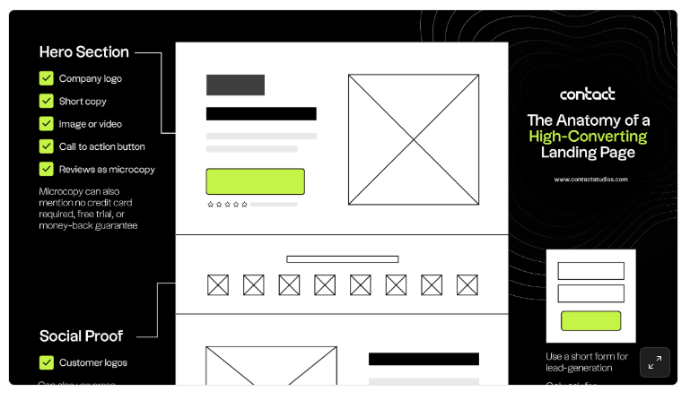
(Source: Figma)
Purpose Driven Page Design
The landing page design should be simple and effective. The goal of a landing page is centred around a certain conversion goal. Your conversion goal can be anything ranging from getting a sale from your store, downloading a free guide or getting contact information of your visitors.
One landing page should focus on one conversion goal. Your learning page should not target individuals to deliver everything at once. This would greatly confuse your visitors. A minimalistic and effective landing page will help you drive more conversions, capture leads and generate revenue. It can become one of the most effective platforms to drive conversions and increase your ROI.
Benefit-Led Messaging
Including text/messages on the landing page is not as same as adding creative. You can include strong messaging in your landing page, which will help you attract viewers’ attention. You can do this by adding catchy hooks, a relevant heading and its description. Your landing page needs driven messages to appeal to customers.
Your landing page requires a supporting copy in addition to strong messaging to persuade visitors to make a purchase. You can describe the benefits of the product along with its features in simple and effective language. The feature highlights the quality of the service or product, while the benefit provides the details of the positive impact the product will have on a customer’s life.
You can show off the benefits and features of the product together by leading with the benefits wherever you can. For example, a landing page of milk milkshake brand writes, “Keep your summer cool with ice-cold sugar-free milkshake”. It highlights the benefits as well as the features of the product.
In simple words, your message should focus on solving customers’ problems. It should emphasise why your products can solve customers’ issues.
Include CTAs to Drive Conversions
The most important thing to remember in landing pages is that they are not your typical homepage. You are bringing your visitors to the landing page with a purpose – to drive conversion. To do that, you should include primary and secondary CTAs (Call to Action) in your landing page.
Including relevant CTAs in your landing page gives ample opportunities to the customer to convert. For example, adding a CTA after your benefits section can drive customers to click on the button. In addition, you can add primary CTAs on top of your landing page near microcopy.
Your Call to Action button should not have simple messages like “Click here”, “Purchase now”, etc. Instead, you can add conversational messages to drive more engagement, like “Get 30% off your purchase”, “Begin free trial for 30 days”, etc.
Social Proof
In the end, you can include testimonials, UGC (User-generated content), case studies, reviews and direct quotes from customers to show social proof. If you can include the name and photo of the customer in the testimonial, it will have more weight and legitimacy. At a time when fake reviews and testimonials are so easy to create, you should show authenticity. The testimonials show proof that other customers had a positive experience using your product or service.
Social proof can take any form, including video interviews, logos of customer companies, direct quotes from customers, case studies or testimonials. You can also include reviews from Amazon or other credible shopping sites.
To Sum Up
The anatomy of a landing page is comprised of simple and effective messaging, clear and concise microcopy, relevant CTAs, benefits and features, testimonials and a clear webpage structure. It is important to have a clear value proposition that immediately delivers the core message to the audience. The landing pages require prominent CTA buttons to encourage immediate action from the visitors.
The landing page design should prioritise user centricity and minimalism. You should organise the images, text, videos, and white spaces in a coherent order following simple visual styles to enhance readability and prevent clutter. Many Performance Marketing companies in India, like VerveOnlineMarketing, offer services related to website design, paid advertising, social engine marketing, etc. For your website design and its digital marketing needs, consult our experts now.

